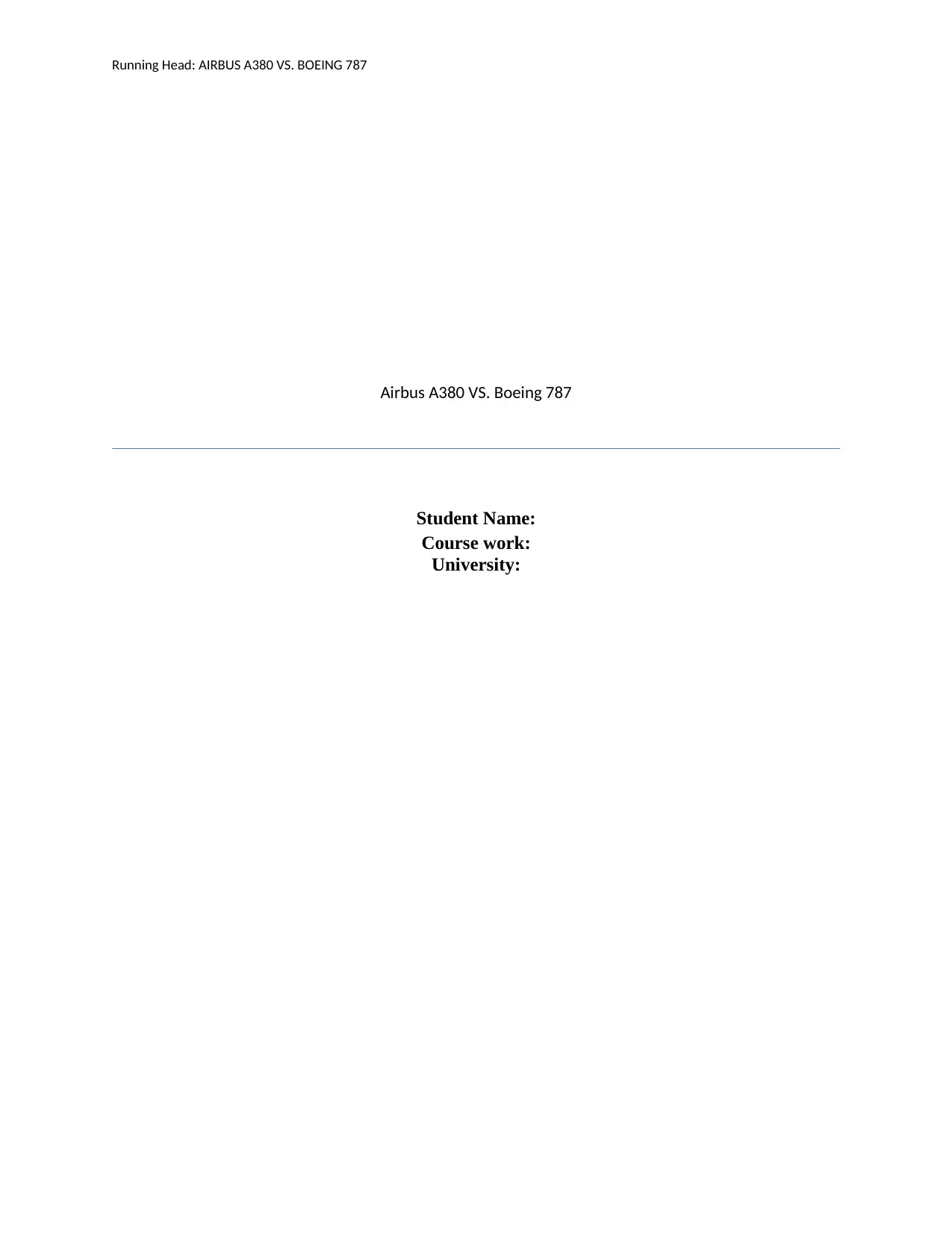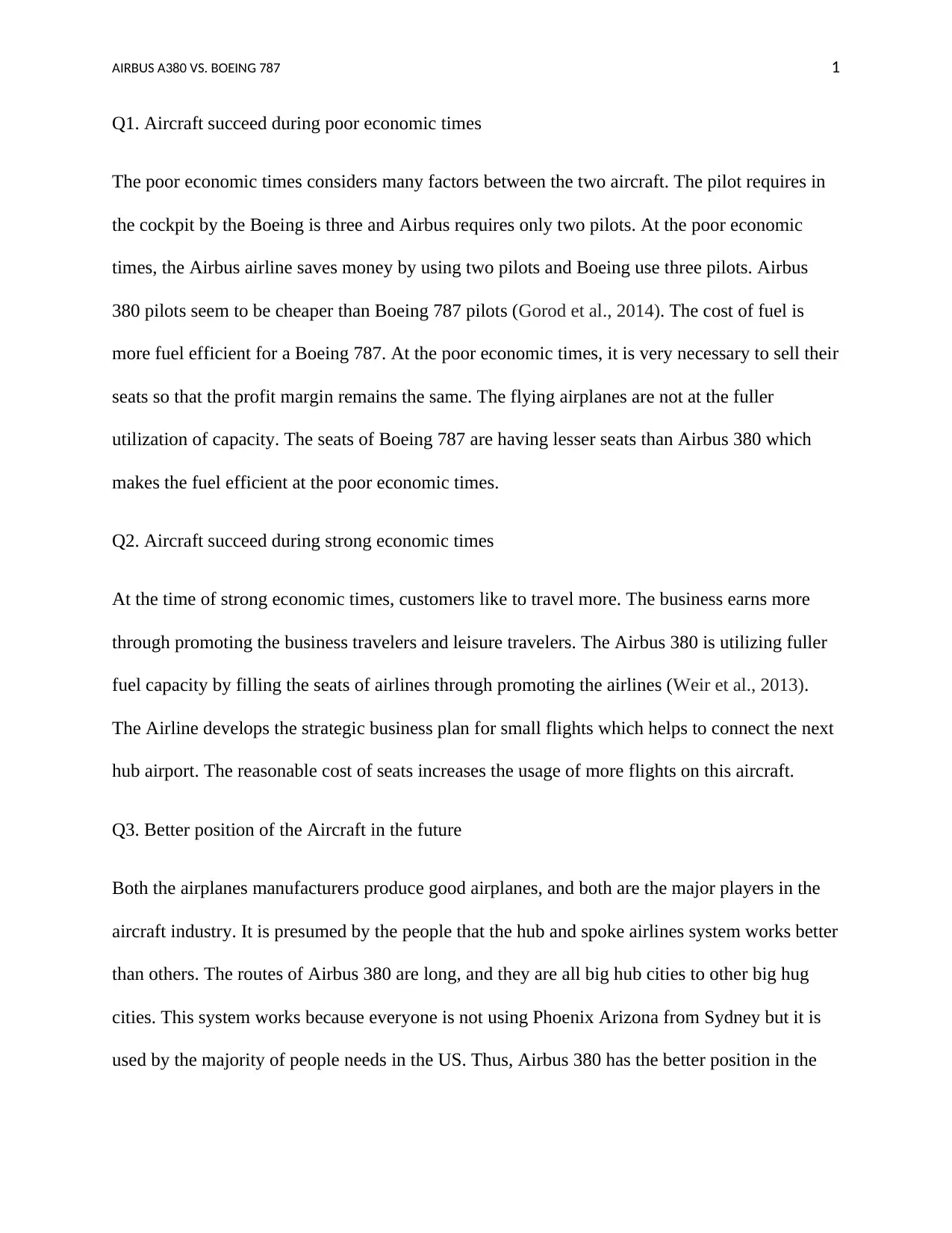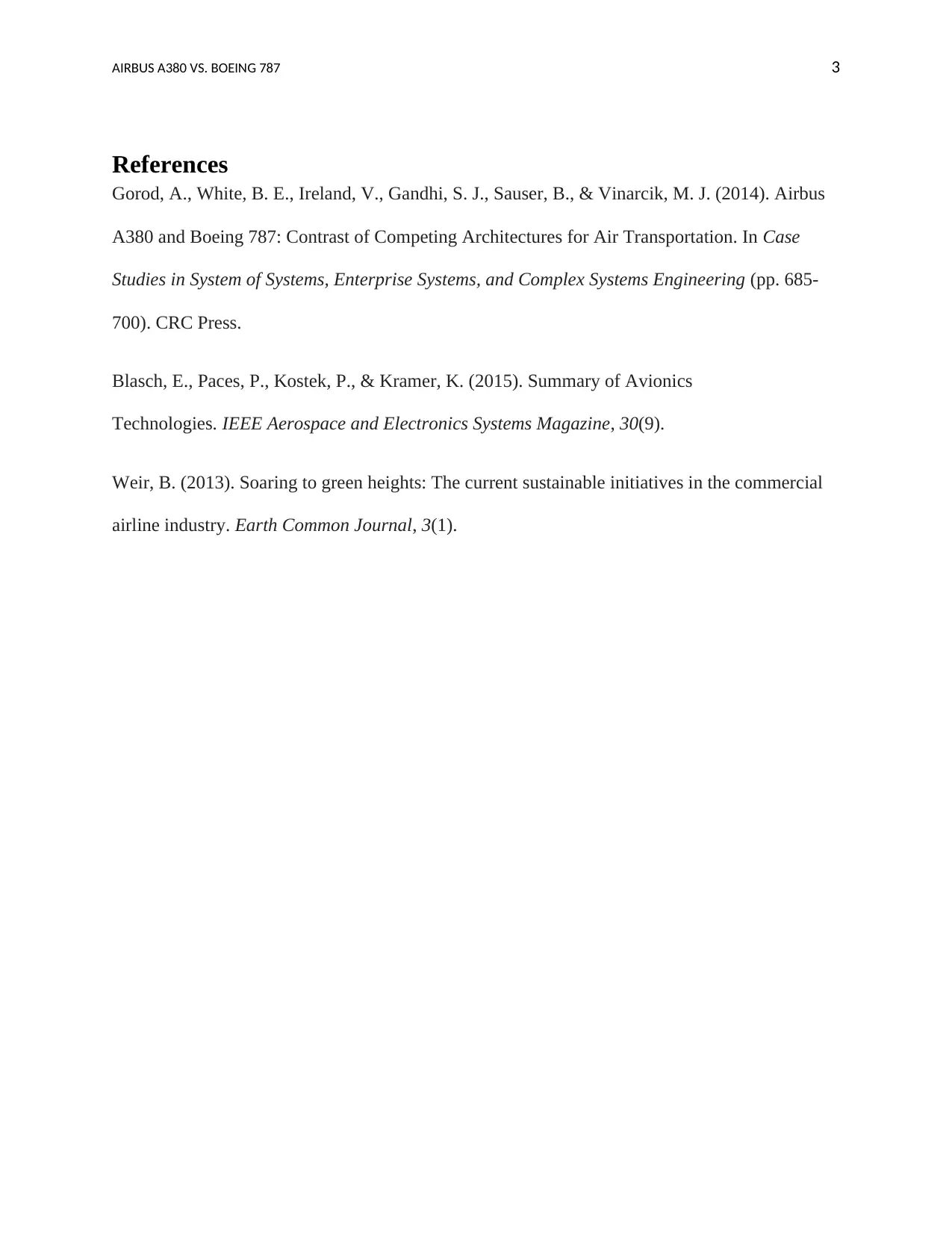Economic Analysis: Airbus A380 vs. Boeing 787 Aircraft Performance
VerifiedAdded on 2019/09/21
|4
|554
|125
Report
AI Summary
This report provides a comparative analysis of the Airbus A380 and the Boeing 787, focusing on their performance in different economic scenarios. The report examines factors such as fuel efficiency, pilot requirements, and the impact of economic conditions on their operational costs and profitability. It analyzes how each aircraft fares during both poor and strong economic times, considering aspects like seat capacity, route structures (hub-and-spoke systems), and the ability to adapt to changing market demands. The analysis highlights the implications of these factors on the overall success and future prospects of both aircraft in the aviation industry, referencing relevant literature to support the arguments.
1 out of 4






![[object Object]](/_next/static/media/star-bottom.7253800d.svg)